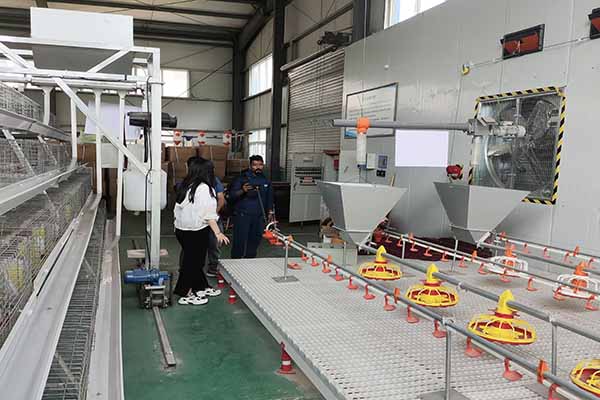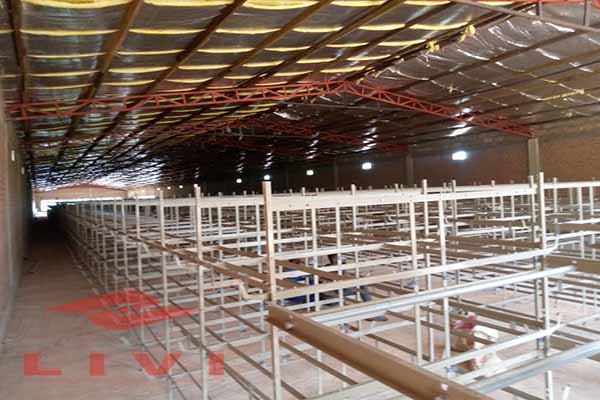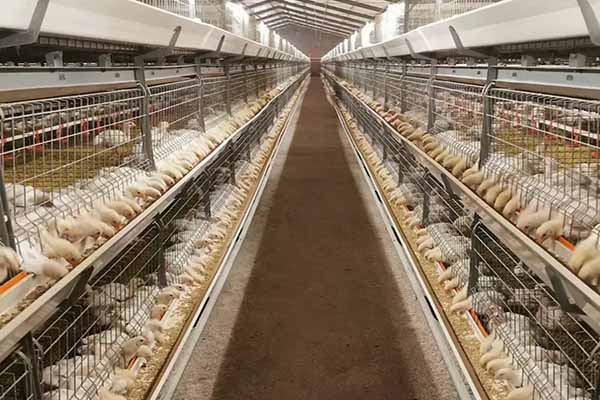Uganda Chicken Equipment Installation: Site Requirements and Best Practices
Time : 2025-06-25
Installing chicken equipment in Uganda requires careful planning and consideration of several key factors. From understanding the local regulations to ensuring the equipment meets the specific needs of the chickens, there are numerous aspects to take into account. This article will delve into the essential site requirements and best practices for installing chicken equipment in Uganda.
Understanding the Local Regulations
Before commencing with the installation of chicken equipment in Uganda, it is crucial to be aware of the local regulations and standards. The Uganda National Animal Genetic Resources and Breeding Centre (ANGRC) plays a vital role in regulating the poultry industry. Here are some key regulations to consider:

- Animal Health and Welfare: The ANGRC sets strict guidelines to ensure the health and welfare of the chickens. These include biosecurity measures, proper ventilation, and waste management systems.
- Building Codes: The Ugandan government has specific building codes that must be adhered to during the construction of chicken houses. These codes cover aspects such as fire safety, electrical installations, and structural integrity.
- Environmental Impact Assessment: Conducting an environmental impact assessment is essential to ensure that the chicken equipment installation does not harm the local ecosystem.
Site Selection and Preparation
Selecting the right sit e is crucial for the success of your chicken equipment installation. Here are some factors to consider during the site selection process:
e is crucial for the success of your chicken equipment installation. Here are some factors to consider during the site selection process:
- Accessibility: Ensure the site is easily accessible for deliveries of equipment, feed, and eggs, as well as for maintenance and monitoring.
- Topography: Choose a flat or gently sloping site to prevent waterlogging during the rainy season.
- Water Supply: Access to a reliable water supply is essential for drinking, cleaning, and cooling the chickens.
- Power Supply: Ensure the site has a stable power supply for running the chicken equipment, especially during the hot months.
- Proximity to Other Farms: Consider the proximity to other poultry farms to avoid cross-contamination and to facilitate knowledge sharing.
Chicken Equipment Selection
Selecting the appropriate chicken equipment is vital for the success of your poultry operation. Here are some key considerations:
- Brooder Houses: For chicks, brooder houses provide a controlled environment to ensure their proper growth and development. Consider factors such as heating systems, lighting, and ventilation.
- Chicken Coops: Choose coops that are suitable for the size of your flock and designed for easy cleaning and maintenance. Ensure the coops have proper ventilation and temperature control.
- Feeders and Waterers: Select feeders and waterers that are appropriate for the size of your chickens and designed for efficient feeding and drinking. Consider factors such as durability, ease of cleaning, and the prevention of feed waste.
- Equipment Placement: Position the equipment strategically to optimize the layout of the farm and ensure easy access for maintenance and monitoring.
Installation Process</ h2>
h2>
During the installation process, it is essential to follow these steps to ensure the proper functioning of the chicken equipment:
- Assemble the Equipment: Carefully follow the manufacturer’s instructions to assemble the chicken equipment.
- Check for Leaks and Faults: Inspect the equipment for any leaks or faults before installing it on the site.
- Install the Equipment: Place the equipment at the designated locations on the farm, ensuring it is properly anchored and secured.
- Connect to Utilities: Connect the equipment to the water and power supply, ensuring all connections are secure and functioning correctly.
- Test the Equipment: Run the equipment to ensure it is functioning correctly and meets the required specifications.
Maintenance and Upkeep
Regular maintenance and upkeep are essential to ensure the longevity and efficiency of the chicken equipment. Here are some key maintenance practices:
- Cleaning: Clean the chicken equipment regularly to prevent the buildup of dirt, debris, and pathogens.
- Inspection: Conduct regular inspections of the equipment to identify and address any issues before they become significant problems.
- Replacement: Replace worn-out or damaged parts promptly to prevent further damage and ensure the proper functioning of the equipment.
- Training: Train your staff on proper maintenance and operation of the chicken equipment to ensure its efficient use.
Conclusion
Installing chicken equipment in Uganda requires careful planning, adherence to local regulations, and proper site selection. By considering the factors mentioned in this article, you can ensure a successful installation and efficient operation of your poultry equipment. Always prioritize the health and welfare of the chickens while maintaining the integrity of the equipment and the farm.











